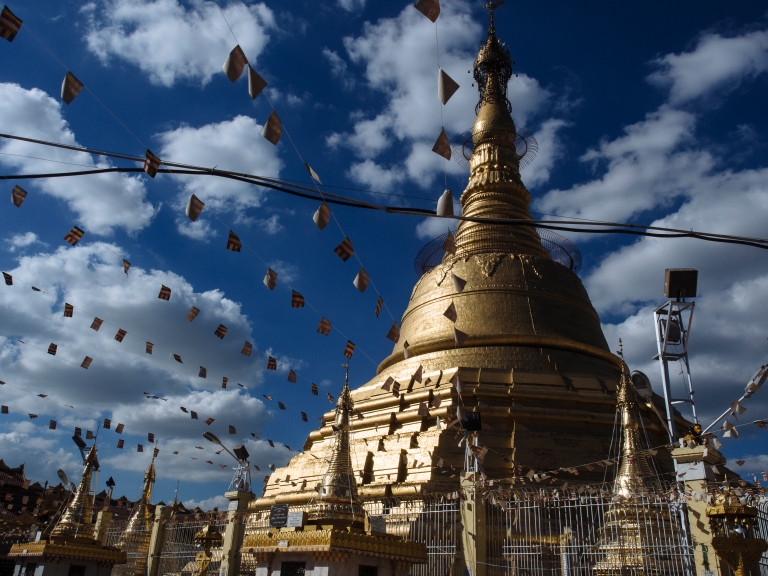Myanmar (Or traditionally known as Burma) is often touted as the last frontier of South-East Asia. The country gained its independence as early as 1947, but it has been marred by bad governing and political decisions. For the longest time, it was controlled by the military, with the country’s most famous Nobel Peace Prize laureate and democracy champion, Aung San Su Kyi put in house arrest. Myanmar was pretty much isolated from the rest of the world.
In recent years, things started to change. The government has made several political reforms and slowly opened up. Many people have said, “You should visit Myanmar now before everything gets too commercialized, too sterile.” Being the late-comer in the travel scene, it still has the fresh appeal. I remember a fellow traveler told me that in his trip to Myanmar few years ago, at one of the hotels he stayed at, the owner was still building new rooms as he was staying in it. It seemed like the country is still getting to know the strange new foreigners and their culture.



At the end of 2016, I eventually gave in to the wanderlust and spent 2 weeks in the country. If there’s one word I would describe Myanmar, it’s innocent.
The impression that the former capital of Myanmar, Yangon (Yup, the current capital is Naypyidaw) left in me was that it was a city in early development. The remnants of being isolated was obvious on the streets. The lack of international chains and convenience was telling as most businesses were run by locals. The department stores I’ve visited were a throwback to the ones seen 20 to 30 years ago – dark, sparsely filled racks that contained mostly local goods. Colonial era buildings are littered around the city, serve as a somber reminder of its past. These buildings were in conditions ranging from state of disrepair to opulent ones that have been restored to their former glory. Some had scaffolding and were being renovated by foreign companies. It was what I imagined Kuala Lumpur to be back in the 50s or 60s.
The local people I’ve met were friendly and soft-spoken. They all came across as genuine and most up for a conversation. Maybe it’s due to country’s British colonial past, locals (Or at least, in Yangon) could speak decent English. Also, I encountered no issue with being scammed of ripped off. Despite poor living conditions, Myanmar is actually one of the safest countries to visit in the region. This I believe is attributed to the fact that crimes against foreigners are punished severely. Moreover, it’s a very religious society who’s deeply rooted in Buddhism. Perhaps the worst you will encounter is annoyance in the form of aggressive – but harmless – vendors.
Myanmar clearly isn’t stagnant. Investments have already started pouring in from neighbouring countries, mainly China. On the ground, things are changing rapidly and with the wave of modernization, more people will be lifted out of poverty and enter the middle class. Modern cafes have already sprouted in Yangon, while some international F&B chains have already entered the market. A number of high-profile construction projects were undertaken in Yangon, sure to give the city a makeover in the following decade. As with anywhere else in the world, with modernazation comes both positive and negative changes. Whether it’s more of the former or the latter, it remains to be seen.
So yes, to reiterate the point that many have made, “Visit Myanmar now!” It’s interesting to witness a country as a whole making the giant leap forward. Sure, you would encounter the occasional travel hiccup. But if you’ve already exhausted the places to visit in this region and have grown tired of the commercialized tourism elsewhere, you might just find what you’re looking here in Burma.








Travel Guide:
Several international airlines currently fly to Yangon. This includes flying from SEA hubs like Bangkok, Kuala Lumpur or Singapore. For my trip in 2016, I flew into Yangon from Kuala Lumpur and then departed from Mandalay to Bangkok on separate flights although both were AirAsia. It saved me time as I didn’t have to return to Yangon at the end of the trip.
Although accessibility to major tourist destinations (Such as Bagan, Mandalay & Inle Lake) is decent but in general, public infrastructure is far behind neighbouring South East Asia countries. Expect traffic delays, electricity cuts, poor street lighting, pot holes, lack of ATMs etc. In fact, international ATMs were new when I travelled in 2016. Cash was still king and to acquire local currency, bring enough US Dollars and change at the airport. In general, ensure you do your research thoroughly before you fly.
Despite all that, I have a really good experience taking long distance buses in Myanmar. I contacted this company called JJ Express on Facebook to book tickets ahead of time. They were very responsive in their replies and their buses are among the most comfortable I’ve taken in Asia. YMMV though, things do change from time to time so check the Tripadvisor forums.
Gears used:
– Olympus OM-D E-M5 Body
– Olympus M.Zuiko 12-40mm f/2.8 lens
